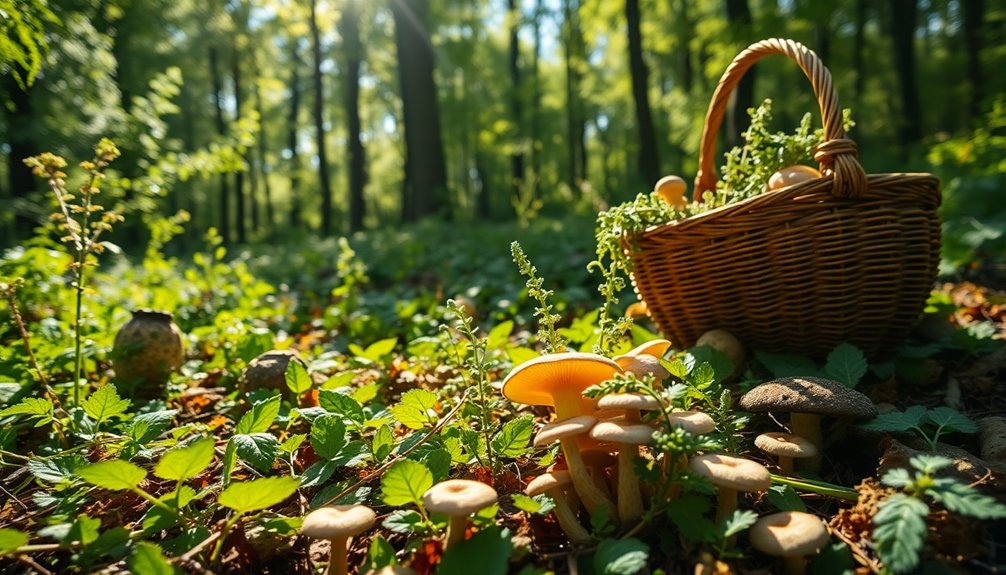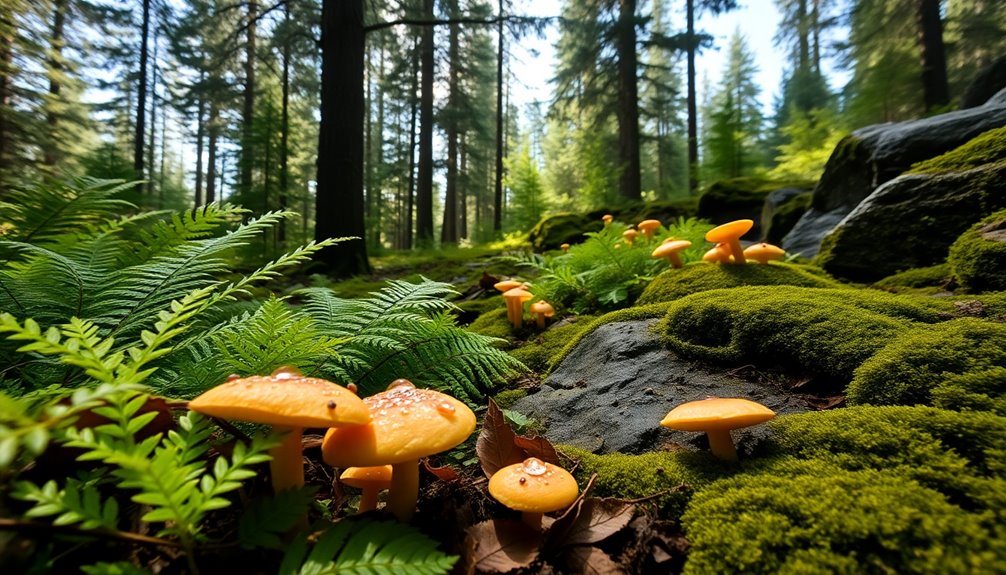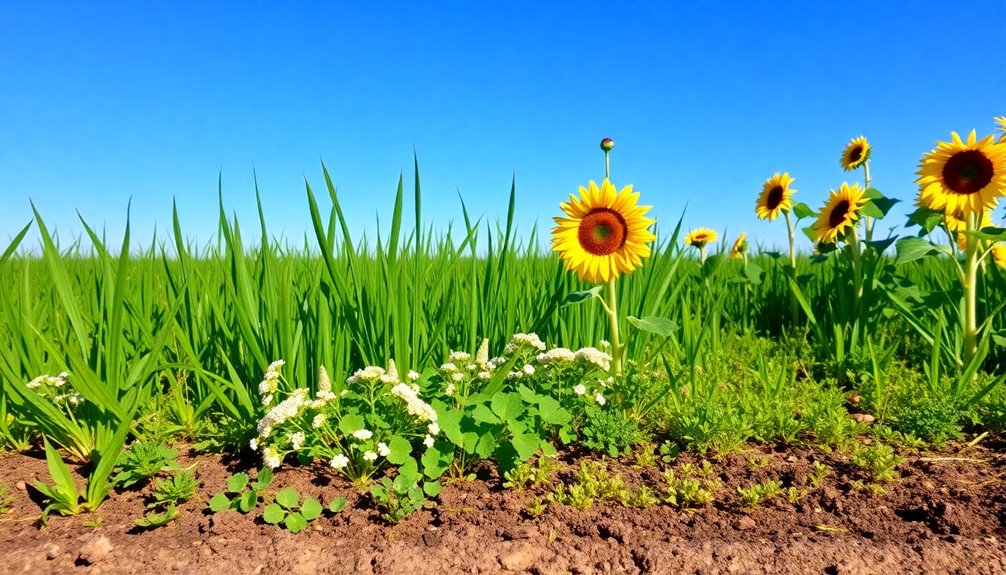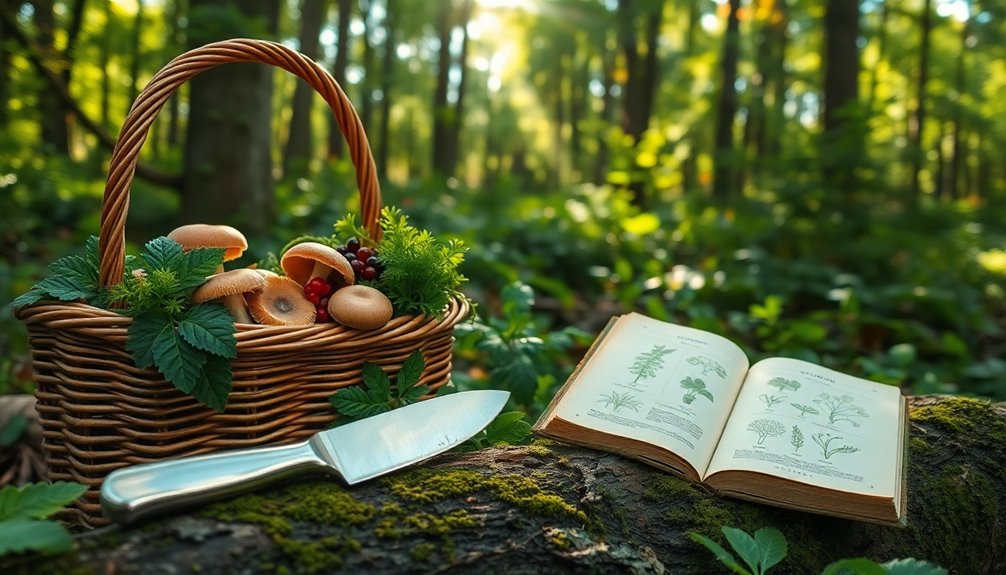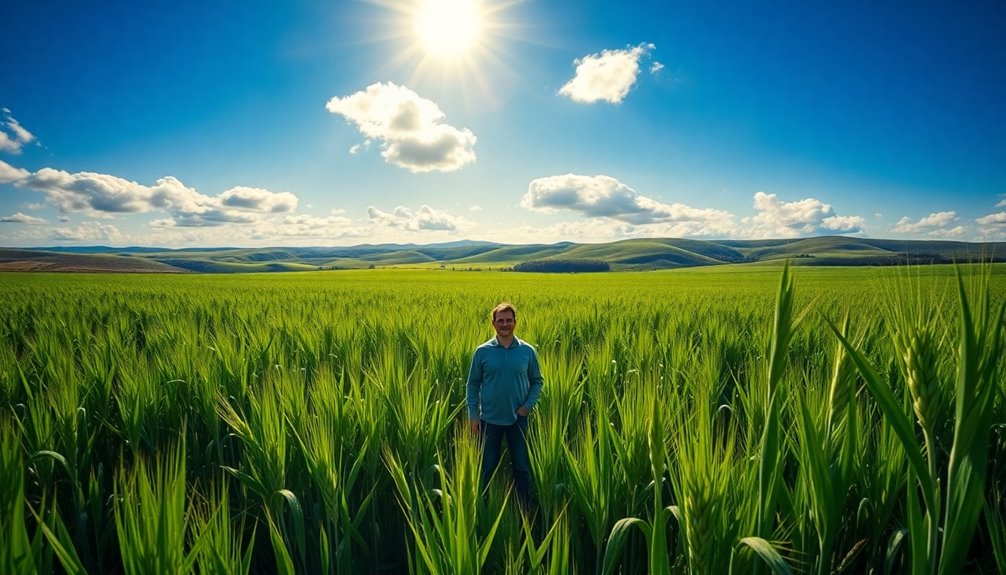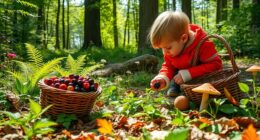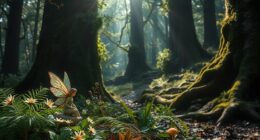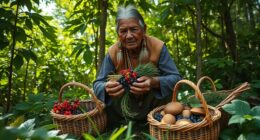The word "foraging" means the active search for and gathering of food from nature. This includes hunting, fishing, and collecting wild plants and fungi. Foraging isn't just about survival; it connects you to local ecosystems and promotes sustainable practices. Historically, it's been a crucial source of nutrition, especially before agriculture became widespread. Today, many people are rediscovering foraging, recognizing its culinary and environmental benefits. By understanding foraging, you can enhance your appreciation for nature and healthy eating. If you're curious about its historical context and modern trends, there's much more to explore!
Key Takeaways
- Foraging refers to actively searching and gathering food from the wild, including hunting, fishing, and collecting plants and fungi.
- Historically, foraging predates agriculture, serving as a primary survival strategy for early human societies.
- Foraging promotes sustainable food acquisition and enhances ecological awareness, supporting biodiversity and local ecosystems.
- Modern foraging trends include urban foraging and the use of technology, such as apps for plant identification.
- Foraging also offers culinary and medicinal benefits, introducing diverse flavors and natural remedies while fostering a connection to nature.
Understanding Foraging Defined
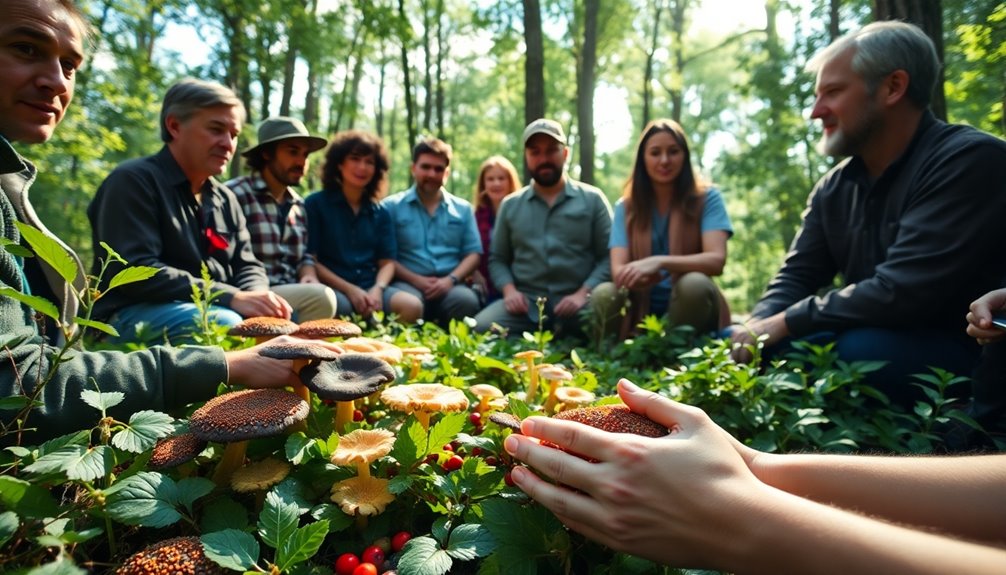
When you think about foraging, it's fundamentally the act of actively searching for and gathering food from the wild. This practice encompasses various methods, including hunting, fishing, and collecting wild plants and fungi.
Foraging is more than just a way to find food; it's an essential survival behavior for many species that allows them to acquire necessary nutrients from their environment.
In today's world, modern foraging reflects a sustainable approach to food acquisition. You're not only reconnecting with nature but also embracing ecological awareness by sourcing food responsibly.
By understanding local ecosystems and their offerings, you can find a variety of edible plants and animals that thrive in your area.
The skills tied to foraging aren't lost; they're inherent to humans and can be rediscovered. Many cultures around the world have practiced foraging for generations, and you can tap into that rich history.
Whether you're interested in wild herbs, mushrooms, or even fishing techniques, foraging can be a rewarding experience. Engaging with this sustainable practice not only nourishes your body but also fosters a deeper connection to the environment around you.
Historical Context of Foraging
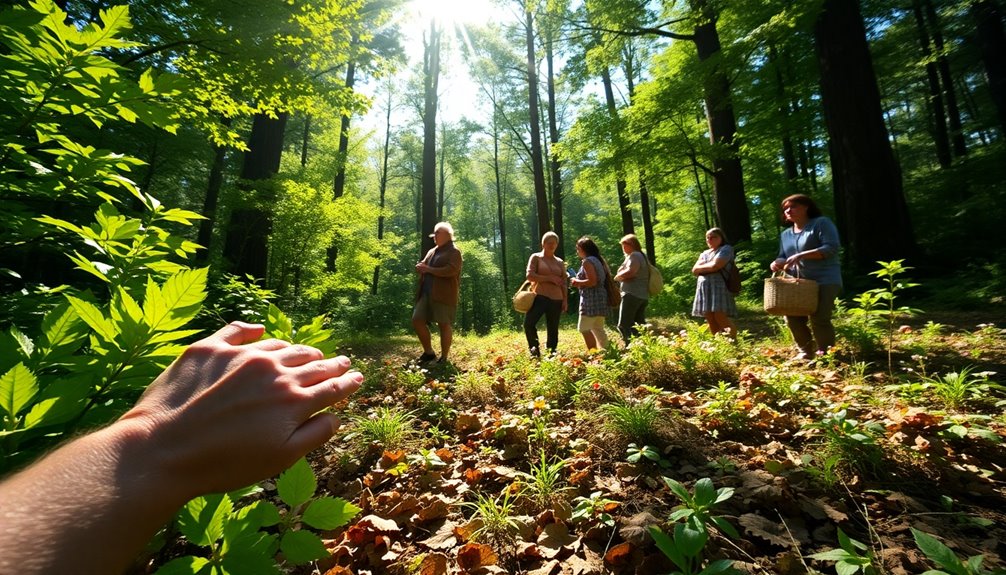
Foraging isn't just a modern trend; it has deep historical roots that stretch back thousands of years. This essential survival strategy predates agriculture, focusing on gathering wild food sources. Archaeological evidence reveals that early human societies, like the Clovis people, primarily foraged for large game while also utilizing smaller animals and diverse plant resources.
Historical records show that foraging was a common practice in Europe until urbanization surged in the 19th and 20th centuries. Families often ventured into the wild, gathering ingredients for meals, integrating this practice into their culinary traditions.
However, as supermarkets became the norm, knowledge of foraging began to decline, overshadowed by the convenience of modern food systems.
Despite this decline, foraging skills remain inherent and can easily be rediscovered. Practices have evolved over the ages, adapting to regional resource availability, cultural traditions, and changing environmental conditions.
Foraging in Animal Behavior
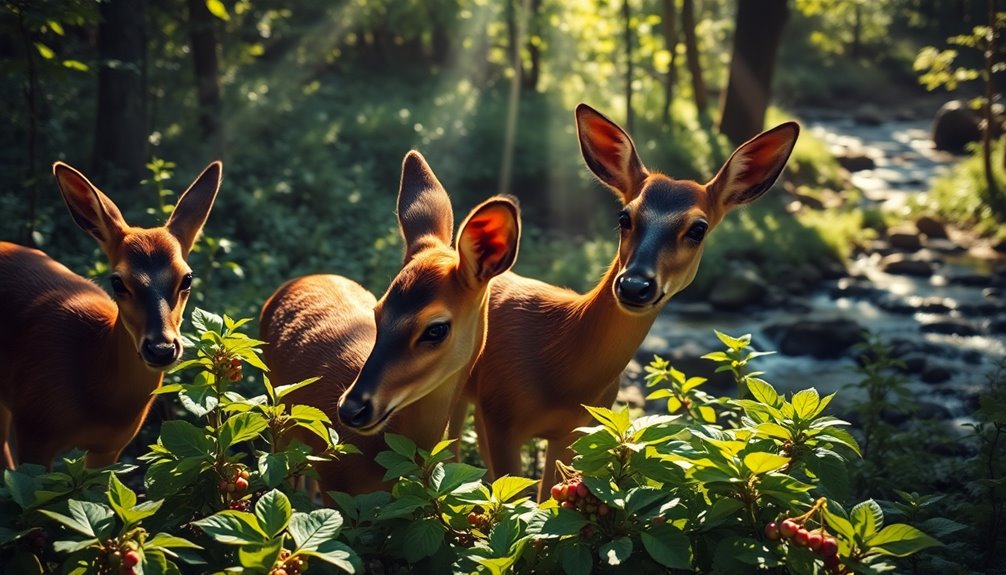
Animal behavior showcases a fascinating array of foraging strategies, reflecting each species' adaptation to its environment. Foraging isn't just about finding food; it's a complex interplay of skills and techniques that enhance survival. Here are some notable examples:
- Great Apes: These animals demonstrate advanced foraging techniques, often using tools and learning from one another to locate food resources effectively. Educational toys can similarly stimulate cognitive growth and problem-solving skills in young children, echoing the learning processes observed in these apes. Furthermore, engaging in hands-on learning activities can mimic the exploratory behavior seen in great apes, fostering independence in young learners. Studies show that effective co-parenting can similarly enhance children's adaptability during transitions.
- Ant Colonies: Worker ants specialize in foraging, showcasing an organized division of labor that maximizes their efficiency in gathering food.
- Birds like Crows and Ravens: These clever birds employ advanced problem-solving skills, using tools and recalling hidden food locations to access their food resources.
- Bears: Exhibiting opportunistic foraging behaviors, bears adapt their diets based on the seasonal availability of food, ranging from berries to fish.
Foraging success largely hinges on environmental factors, such as seasonality and competition. In regions like Minnesota's wild edibles, diverse ecosystems provide ample opportunities for various species to thrive.
Understanding these behaviors not only highlights the ingenuity of various species but also underscores the importance of food resources in their survival strategies. Recognizing these patterns can deepen your appreciation for the complexity of animal behavior.
Human Foraging Practices

Throughout history, humans have relied on foraging as a fundamental means of survival, gathering wild plants, hunting, and fishing long before agriculture emerged. Early humans, like the Clovis people, showcased advanced foraging practices around 13,000 years ago, specializing in hunting large game. Their techniques illustrate the adaptability of human foraging to regional ecosystems, where communities utilized local resources such as nuts, berries, and edible mushrooms.
Today, many indigenous and rural communities continue to embrace foraging, drawing on traditional knowledge passed down through generations. This wisdom helps them identify and harvest food from their environments, ensuring their survival and enhancing their diets.
In recent years, there's been a growing interest in foraging among urban dwellers, who seek to reconnect with nature. Workshops and educational programs have emerged, teaching people how to safely identify and gather wild edible plants.
As you explore foraging, you'll discover that it's not just about survival; it's a way to connect with your environment, learn about local ecosystems, and appreciate the rich history of human adaptation.
Embracing foraging can deepen your understanding of food and its sources, enhancing your overall experience with nature.
Culinary Benefits of Foraging

Culinary creativity flourishes when you explore the world of wild edibles. Foraging not only opens the door to a diverse range of nutritious plants, mushrooms, and herbs, but it also enhances the flavors in your meals. Many wild foods, like dandelions, nettles, and wild garlic, pack a nutritional punch that often surpasses cultivated options. By incorporating these ingredients into your cooking, you can embrace healthier eating habits while supporting local ecosystems. Additionally, many foraged ingredients can be combined with protein-packed seeds to create balanced meals that are both nutritious and satisfying. Foraging practices can also influence ecosystem health, as they promote biodiversity and sustainability. Moreover, understanding tree relationships can lead to better mushroom foraging success. Herbal teas, often made from foraged herbs, can also provide antioxidants that support overall well-being.
Here are four culinary benefits of foraging:
- Diverse Flavors: Wild edibles add unique tastes and textures to traditional recipes.
- Nutritional Value: Foraged foods are often richer in vitamins and minerals compared to store-bought options.
- Sustainable Practices: Choosing wild ingredients promotes chemical-free, package-free food, reducing your environmental impact.
- Connection to Nature: Foraging allows you to connect with your local environment and rediscover traditional culinary practices.
Incorporating adaptogenic herbs into your foraged meals can further enhance your energy levels and vitality, creating a holistic culinary experience. Embracing foraging in your cooking not only enhances your meals but also aligns your culinary practices with sustainability.
Medicinal Uses of Wild Edibles

Wild edibles can be a treasure trove of medicinal benefits, offering natural remedies that have stood the test of time. Many of these plants, like dandelions and nettles, boast impressive medicinal properties, supporting digestive health, reducing inflammation, and boosting your immune system. For example, incorporating chia seeds into your diet can further enhance digestive regularity due to their high soluble fiber content. Additionally, consuming turmeric has been linked to significant anti-inflammatory effects, making it a valuable addition to your diet. Foraging for these plants is part of masterful weaving traditional practices that connect communities with their natural environments. Furthermore, chia seeds are a complete protein source, providing all essential amino acids necessary for overall health.
For instance, elderberries are often foraged in late summer and are known for their rich antioxidant content. Consuming them in syrup or tea form can help alleviate cold and flu symptoms.
Certain mushrooms, such as reishi and chaga, are also prized for their adaptogenic qualities, believed to enhance stress resilience and promote overall well-being.
When it comes to topical uses, wild herbs like yarrow and plantain can aid in wound healing and reduce skin inflammation thanks to their antiseptic properties. Additionally, many foraged plants, like turmeric's anti-inflammatory properties, have been shown to support pain relief and overall health.
Foraging and utilizing wild edibles not only provides nutritional benefits but also deepens your understanding of plant-based medicine and its role in holistic health practices.
Environmental Impact of Foraging
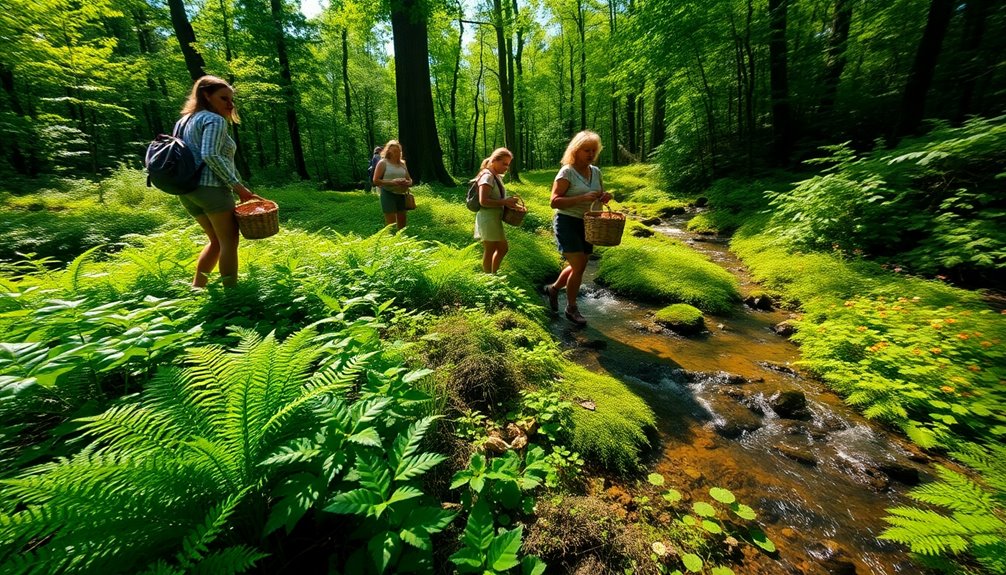
Foraging offers numerous environmental benefits that extend beyond personal health. By engaging in this practice, you actively contribute to a healthier planet while enjoying the diverse flavors of wild foods.
Here are some key impacts of foraging on the environment:
- Promotes Biodiversity: Foraging encourages the consumption of a variety of wild foods, preserving local plant species and their ecosystems.
- Reduces Pressure on Agriculture: Responsible foraging practices lessen the demand for industrial agriculture, which can lead to decreased habitat destruction and lower carbon emissions.
- Enhances Conservation Awareness: When you forage, you develop a greater understanding of local flora and fauna, fostering a connection that enhances conservation efforts.
- Supports Sustainable Ecosystems: Foraging can maintain ecological balance and support food webs through sustainable harvesting practices, leading to healthier ecosystems.
Skills Needed for Successful Foraging
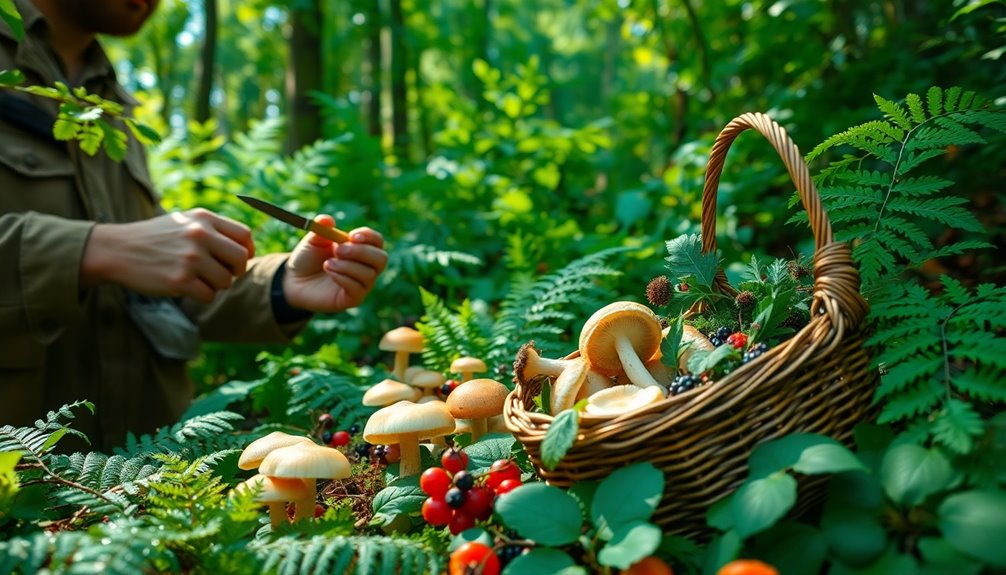
Starting on a foraging adventure requires a solid set of skills to guarantee you gather safe and delicious wild foods. First and foremost, you'll need a strong knowledge of local flora, as accurate identification of edible versus toxic plant species is essential. This knowledge helps you avoid potential health risks associated with consuming harmful plants.
Familiarity with seasonal availability enhances your foraging success. Different plants and mushrooms peak at various times throughout the year, so understanding these patterns will allow you to maximize your finds. Developing keen observational skills is also important. Spotting wild edibles in their natural habitats often requires patience and attention to detail.
Another important aspect of successful foraging is understanding local regulations. Knowing the laws that protect certain species and ecosystems is critical for responsible foraging. This helps guarantee you're not only compliant but also contributing to sustainable practices.
Lastly, investing in a good foraging book or guide can be invaluable, especially for beginners. These resources provide detailed information on plant identification, preparation, and sustainable harvesting practices, making your foraging journey safer and more enjoyable.
Community and Cultural Aspects

Foraging isn't just about gathering food; it's a practice rich with cultural significance that connects you to your community and heritage.
Participating in community foraging events allows you to learn from others while sharing valuable knowledge about local plants and sustainable practices.
This camaraderie fosters a deeper appreciation for the land and its resources, reinforcing the ties that bind us to our environment and each other.
Cultural Significance of Foraging
Throughout history, communities have thrived by gathering food from their natural surroundings, weaving foraging into the fabric of cultural identity. This practice has deep cultural roots in various societies, especially among indigenous and nomadic groups that depend on local flora and fauna.
Foraging isn't just about food; it's a celebration of traditional knowledge, passed down through generations, emphasizing the importance of community and shared experiences.
Here are four ways foraging enriches cultural significance:
- Connection to Heritage: Foraging practices preserve cultural heritage, allowing individuals to connect with their ancestors and local environments.
- Shared Learning: Communities gather to share traditional knowledge, reinforcing bonds and fostering a sense of belonging.
- Sustainable Practices: Embracing foraging promotes sustainable living, encouraging respect for nature and local ecosystems.
- Modern Movements: The resurgence of interest in foraging in urban areas reflects contemporary culinary trends and the quest for healthier food choices. Additionally, foraging aligns with sustainable practices that emphasize the importance of respecting local ecosystems.
Community Foraging Events
In recent years, community foraging events have gained popularity as a way to connect people with nature and each other. These gatherings not only create a space for local enthusiasts to share knowledge about native edible plants but also promote sustainable foraging practices. By participating, you'll foster a sense of connection and collective learning among fellow foragers. Additionally, engaging in these events can enhance your awareness of pitfalls in foraging, such as misidentifying plants or neglecting safety measures. For instance, incorporating healthy forage into these events can provide participants with insights into nutritious wild food options. Furthermore, these events often reflect the principles of sustainable practices that are essential for minimizing environmental impacts associated with resource gathering. Community foraging also encourages participants to consider the importance of nutritional balance when selecting wild edibles to ensure a wholesome diet. Moreover, participants can learn about the antioxidant benefits of various wild plants, which can enhance their overall health.
Here's a quick look at the benefits of these events:
| Aspect | Description |
|---|---|
| Cultural Appreciation | Showcases traditional foraging techniques and the historical significance of wild foods. |
| Skill Development | Offers workshops and guided forays to learn identification skills and safe practices. |
| Community Engagement | Encourages social interaction and knowledge sharing through platforms like social media. |
| Economic Support | Highlights wild food resources, benefiting local culinary practices and economies. |
Knowledge Sharing Practices
The act of sharing knowledge in foraging communities enriches both individual and collective experiences. When you participate in foraging, you're not just gathering food; you're also engaging in a rich tapestry of cultural exchange.
Here are some key aspects of knowledge sharing practices in foraging:
- Culinary Traditions: Foraging has inspired unique culinary practices that celebrate local foods and their uses. Additionally, these practices often incorporate traditional methods that have been passed down through generations.
- Community Events: Organized foraging activities allow you to learn techniques and recipes, fostering connections among participants.
- Online Platforms: Social media and forums are essential for foragers to share experiences, tips, and sustainability practices, helping build a supportive community.
- Educational Workshops: These sessions teach practical foraging skills while emphasizing biodiversity and the importance of preserving native species.
- Additionally, support networks formed through these communities help individuals navigate the challenges of sustainable foraging.
In these ways, foraging serves as a platform for knowledge sharing that transcends individual learning. It reinforces the bonds within your community and deepens your understanding of the land.
Modern Foraging Trends and Resources
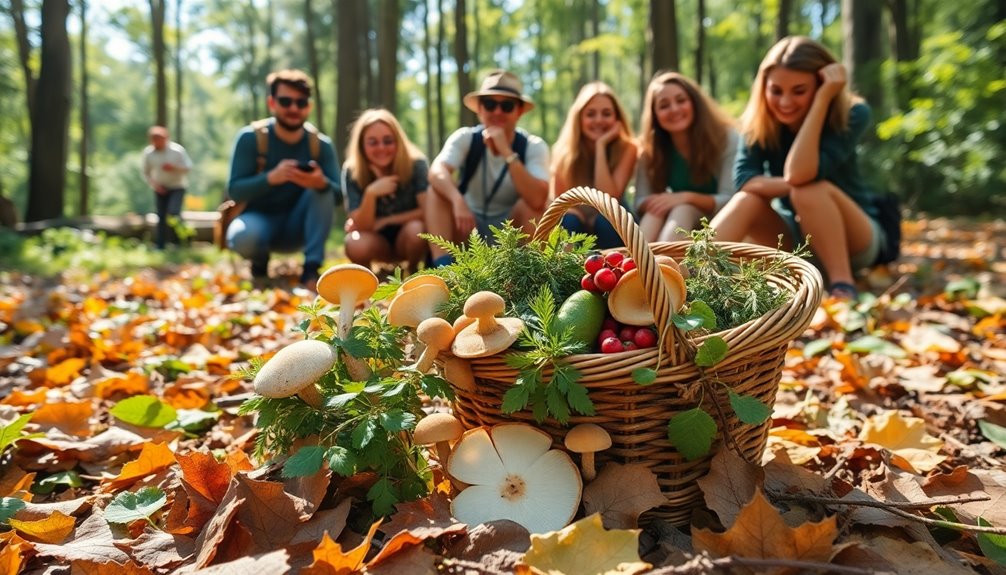
Modern foraging practices are popping up in urban areas, with more people enthusiastic to explore their local landscapes for wild foods.
You'll find a variety of educational resources, from workshops to online communities, that can help you sharpen your foraging skills.
As you connect with nature and others, you'll also learn the importance of sustainable harvesting practices. Engaging in foraging can also enhance your critical thinking skills as you navigate the complexities of identifying safe and edible plants.
Urban Foraging Practices
Reconnecting with nature through urban foraging has become a vibrant trend as people look for fresh, local ingredients amid bustling city life.
Urban foraging not only allows you to discover edible plants but also promotes sustainable practices that benefit the environment.
Here are four ways you can immerse yourself in this rewarding activity:
- Join community workshops: Participate in local foraging events to learn about edible plants and sustainable harvesting methods from experienced foragers.
- Use smartphone apps: Leverage technology to identify wild herbs, berries, and edible flowers in your area, enhancing your foraging confidence.
- Explore organized groups: Connect with foraging clubs in cities like New York and San Francisco, where you can share knowledge and enjoy the camaraderie of fellow foragers.
- Understand local laws: Before you head out, familiarize yourself with regulations regarding foraging in public spaces to avoid fines and promote responsible practices.
Foraging Education Resources
Foraging education resources are thriving as more people seek to learn about wild foods and sustainable practices. Modern foraging education includes a variety of workshops, online courses, and community events that teach you how to identify and safely gather wild foods.
In urban areas, foraging classes emphasize sustainable practices and local biodiversity, helping you reconnect with nature. Participating in expert-led foraging walks is a great way to learn about edible plants, mushrooms, and herbs found in your local environment.
These educational programs not only enhance your knowledge but also foster a sense of community among fellow foragers. Online platforms and social media groups have emerged, allowing you to share tips, recipes, and foraging successes with others who share your passion.
Additionally, resources like field guides and mobile apps can assist you in identifying edible species while ensuring you understand the importance of foraging regulations and ethical practices.
Frequently Asked Questions
What Is the Meaning of Foraging?
Foraging means searching for and gathering food from natural sources like plants, fruits, and mushrooms.
You engage in this ancient practice, which connects you to nature and promotes sustainability.
By foraging, you not only find nutritious food but also learn about local flora and fauna, helping you distinguish between edible and toxic species.
This skill enhances your diet and raises awareness about biodiversity, making foraging a rewarding and beneficial activity.
What Is the Meaning of the Word Foraging?
Foraging means searching for and gathering food or provisions from your environment. You might hunt, fish, or collect wild plants to sustain yourself.
This practice isn't just about humans; many animals also forage to find nourishment.
When you forage, you connect with nature and learn about local ecosystems. It's a sustainable way to source food, allowing you to appreciate the resources around you while also embracing a lifestyle that promotes environmental awareness.
What Is Another Word for Foraging?
Another word for foraging is "gathering."
When you go out to collect wild plants, fruits, or mushrooms, you're engaging in this act.
You might also think of "hunting," especially when you're after meat from wild animals.
If you're looking for food that's already dead or discarded, then "scavenging" fits the bill.
In a broader sense, "harvesting" can describe the collection of crops or wild edibles.
Each term highlights a different aspect of resource collection.
Does Forage Mean Search?
When you think of a treasure hunt through nature, you're engaging in the delightful act of foraging.
Yes, "forage" does mean to search, particularly for food. It's like starting on an adventure where you seek out wild plants, mushrooms, or other edible goodies.
This pursuit not only satisfies your hunger but also connects you with the environment, allowing you to explore its hidden culinary gems while appreciating the beauty of nature.
Conclusion
Foraging, like a treasure hunt in nature, offers a wealth of knowledge, nourishment, and connection to our environment. As you embrace this ancient practice, you'll discover not just food, but a deeper appreciation for the world around you. Whether you're exploring the woods or your backyard, remember that each plant and mushroom holds a story waiting to be uncovered. So grab your basket and step into this adventure—there's a bounty of wisdom just waiting for you!


